Design Technology

Intent
At Ascot Road School, our Design and Technology curriculum inspires creativity, problem-solving, and innovation. Through hands-on activities, we nurture curiosity and teach essential skills like design thinking and digital technology. Our goal is to empower students to become confident makers and prepare them for success in a changing world.
The design and technology projects are well sequenced to provide a coherent subject scheme that develops children’s designing, planning, making and evaluating skills. Each project is based around a design and technology subject focus of structures, mechanisms, cooking and nutrition or textiles. The design and technology curriculum’s electronic systems and IT monitoring and control elements are explicitly taught in our science projects to ensure the links between the subjects are highlighted. Where possible, meaningful links to other areas of the curriculum have been made. For example, the cooking and nutrition project ‘Eat the Seasons’ is taught alongside the geography project ‘Sow, Grow and Farm’. All the projects follow a structure where children are introduced to key concepts and build up knowledge and skills over time, using a more comprehensive range of equipment and building, cutting, joining, finishing and cooking techniques as they progress through school. All projects contain focused, practical tasks in the Develop stage to help children gain the knowledge and skills needed to complete their Innovate tasks independently. Throughout Key Stages 1 and 2, children build up their knowledge and understanding of the iterative design process. They design, make, test and evaluate their products to match specific design criteria and ensure they fit their purpose. Throughout the projects, children are taught to work hygienically and safely.
Implementation
Key Stage 1
In the autumn term of Year 1, children begin to learn about structures in the project Shade and Shelter before designing and making a shelter. In the spring term project Taxi!, they learn the term ‘mechanism’ and assemble and test wheels and axles. In the summer term, children begin to learn about food sources in the project Chop, Slice and Mash and 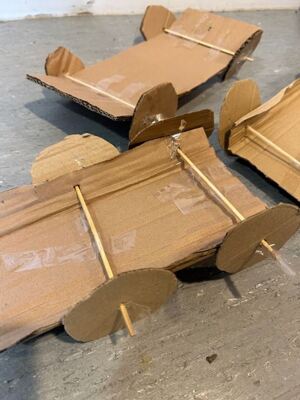 use simple preparation techniques to create a supermarket sandwich. In the autumn term of Year 2, children learn more about food in the project Remarkable Recipes, where they find out about food sources, follow recipes and learn simple cooking techniques. In the spring term project Beach Hut, children develop their knowledge of structures further, learning to cut, join and strengthen wood for the first time. In the summer term, children begin to develop their understanding of textiles in Cut, Stitch and Join. They learn to sew a simple running stitch, use pattern pieces and add simple embellishments. They also continue to learn about mechanisms in the project Push and Pull by using sliders, levers and linkages in products
use simple preparation techniques to create a supermarket sandwich. In the autumn term of Year 2, children learn more about food in the project Remarkable Recipes, where they find out about food sources, follow recipes and learn simple cooking techniques. In the spring term project Beach Hut, children develop their knowledge of structures further, learning to cut, join and strengthen wood for the first time. In the summer term, children begin to develop their understanding of textiles in Cut, Stitch and Join. They learn to sew a simple running stitch, use pattern pieces and add simple embellishments. They also continue to learn about mechanisms in the project Push and Pull by using sliders, levers and linkages in products
Lower Key Stage 2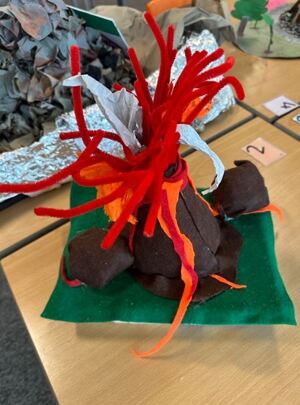
In the autumn term of Year 3, children continue to learn about food, understanding the concept of a balanced diet and making healthy meals in the project Cook Well, Eatwell. In the spring term project Making it Move, children extend their understanding of mechanisms by exploring cams and using joining and finishing techniques to make automaton toys. In the summer term project Greenhouse, they continue to develop their knowledge of structures, using triangles and braces for strength. They design and build a greenhouse, using their understanding of opacity and transparency and the needs of plants from science learning to inform their design. In the autumn term of Year 4, children continue to develop their understanding of food. They learn about food safety and preservation technologies before designing and making packaging for a healthy snack. During the spring term project Functional and Fancy Fabrics, children continue to explore textiles, learning about the work of William Morris before designing, embellishing and finishing a fabric sample. In the summer term project Tomb Builders, they build on their knowledge of mechanisms, learning about six simple machines and using their knowledge to create a lifting or moving device prototype. They also explore and use electrical systems and IT monitoring and control in the science project Electrical Circuits and Conductors for the first time.
Upper Key Stage 2
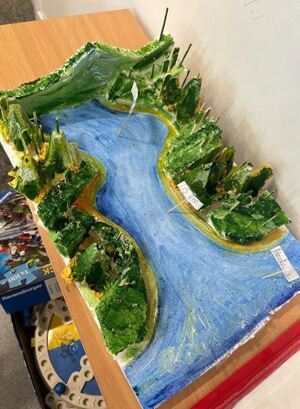 In the autumn term of Year 5, children deepen their understanding of mechanisms by studying pneumatic systems in the project Moving Mechanisms. They learn about the forces at play and create a prototype for a functional, pneumatic machine. In the spring term project Eat the Seasons, children continue to explore food and nutrition, learning about seasonal foods and the benefits of eating seasonally. In the summer term, they learn more about structures in the project Architecture, studying the history of architecture and developing new ways to create structural strength and stability. They use computer-aided design and consolidate their making skills to produce scale models. They also explore the electrical conductivity of materials before making products incorporating circuits in the science project Properties and Changes of Materials. In the autumn term of Year 6, children learn about processed and whole foods in the project Food for Life, creating healthy menus from unprocessed foods. In the spring term project Engineer, children consolidate their knowledge of structures, joining and strengthening techniques and electrical systems by completing a bridge-building challenge. In the summer term project Make Do and Mend, they extend their knowledge of textiles by learning new stitches to join fabrics and using pattern pieces to create a range of products. Throughout the design and technology scheme, there is complete coverage of all national curriculum programmes of study. CurriculumPRO allows you to interrogate the sequencing of curriculum aspects and concepts, vocabulary and connectivity of the design and technology scheme with other curriculum subjects
In the autumn term of Year 5, children deepen their understanding of mechanisms by studying pneumatic systems in the project Moving Mechanisms. They learn about the forces at play and create a prototype for a functional, pneumatic machine. In the spring term project Eat the Seasons, children continue to explore food and nutrition, learning about seasonal foods and the benefits of eating seasonally. In the summer term, they learn more about structures in the project Architecture, studying the history of architecture and developing new ways to create structural strength and stability. They use computer-aided design and consolidate their making skills to produce scale models. They also explore the electrical conductivity of materials before making products incorporating circuits in the science project Properties and Changes of Materials. In the autumn term of Year 6, children learn about processed and whole foods in the project Food for Life, creating healthy menus from unprocessed foods. In the spring term project Engineer, children consolidate their knowledge of structures, joining and strengthening techniques and electrical systems by completing a bridge-building challenge. In the summer term project Make Do and Mend, they extend their knowledge of textiles by learning new stitches to join fabrics and using pattern pieces to create a range of products. Throughout the design and technology scheme, there is complete coverage of all national curriculum programmes of study. CurriculumPRO allows you to interrogate the sequencing of curriculum aspects and concepts, vocabulary and connectivity of the design and technology scheme with other curriculum subjects
Impact
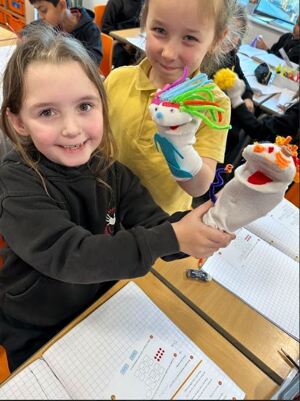
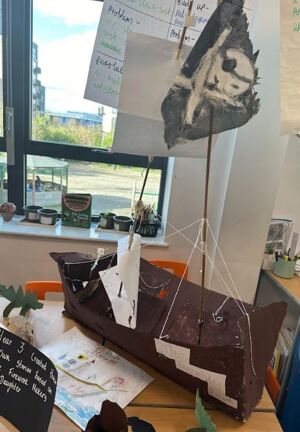
-
Design and Technology (D&T) classes encourage kids to think creatively and come up with new ideas.
-
Children learn practical skills like building, crafting, and using technology, which can help them in many areas of life.
-
D&T teaches children how to create and improve products, which can inspire them to start their own businesses or work in innovative fields.
-
Children learn to design things that help solve real-world problems, like making products that are good for the environment.
-
D&T mixes science, technology, engineering, and Math in exciting ways, making these subjects more interesting for students.
-
By teaching about new technologies and how to adapt to change, D&T helps students get ready for jobs in the future.
what does D&T look like in Reception?
In Reception, Design and Technology (D&T) is taught through EYFS Development Matters. It is integrated into the curriculum in a developmentally appropriate and play-based manner. Children are given opportunities to explore a variety of materials and tools in a safe and supervised environment. This might include activities like playing with construction toys, experimenting with different textures, and using simple tools like scissors or paint brushes. D&T in the EYFS encourages imaginative and creative play. Children are encouraged to use their imagination to build, create, and design using a variety of materials. This might involve building structures with blocks, creating collages with different materials, or role-playing in a pretend kitchen or workshop. Through D&T activities, children develop problem-solving skills as they experiment with materials and explore how things work. They learn to overcome challenges and adapt their designs based on their experiences and observations. D&T activities often involve collaboration and social interaction as children work together to build, create, and problem-solve. They learn to communicate ideas, negotiate roles, and work cooperatively with their peers.
how are SEND children supported with D&T?
Different activities: Teachers offer different tasks to match students' abilities.
Easy-to-use tools: Tools are adapted for students who find them hard to use.
Picture instructions: We use pictures to help students understand tasks.
Hands-on learning: Children do activities with objects they can touch and feel.
Help from friends: Children can work with classmates who can help them.
Encouragement: We give praise and support to keep children motivated.
Culture
Our school fosters a vibrant culture of Design and Technology through a comprehensive curriculum, that has included:
-
Dedicated display boards or interactive display to showcase D&T Projects
-
Lunchtime cooking club run by an experienced teacher
-
Design and Technology workshop, e.g. puppet making workshop
-
D&T is integrated with other subjects such as science, mathematics, art, and literacy, creating interdisciplinary learning experiences that help students make connections between different areas of knowledge.
-
Student achievements in D&T are celebrated and showcased in assembly


